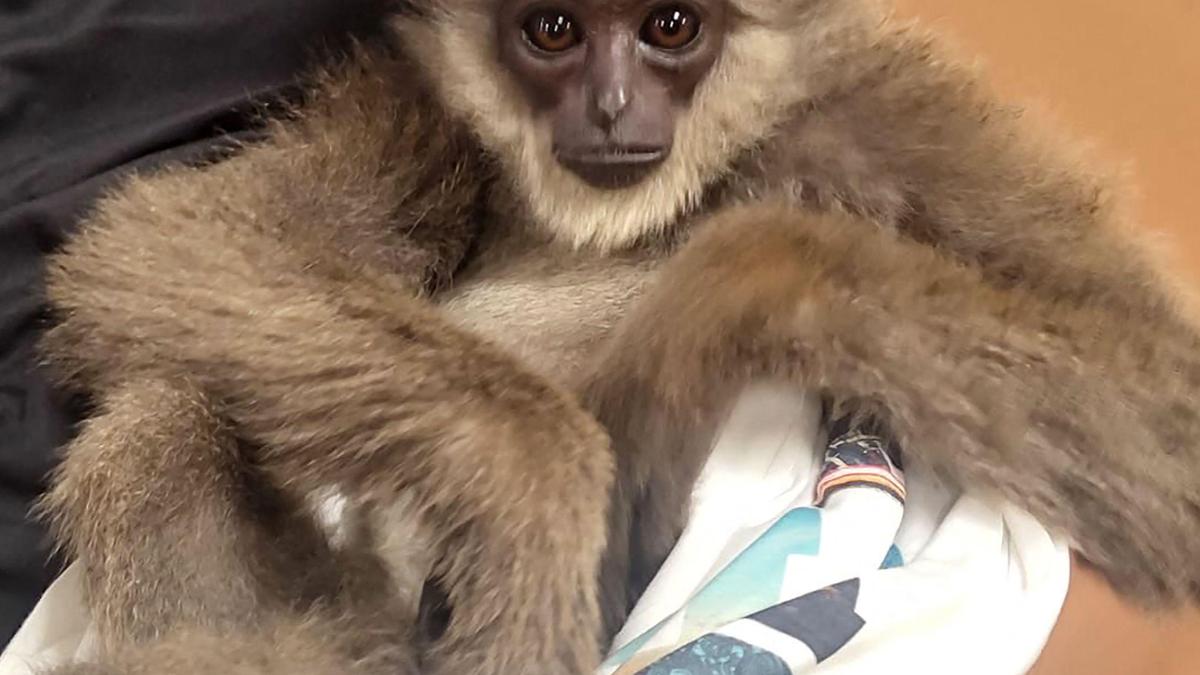Copyright thehindu

A groundbreaking global study on gibbon genomes has revealed that the deletion of a specific 205-base pair (bp) sequence in the Sonic Hedgehog gene is responsible for the gibbons’ iconic elongated limbs — perfectly adapted for brachiation, their tree-swinging mode of locomotion. Published in the prestigious journal ‘Cell’, this collaborative research resolves long-standing debates about gibbon evolution and uses ancient DNA to rewrite the history of an extinct “imperial” ape. “This study marks a significant advancement in understanding these remarkable and often understudied creatures, and contributes to their protection,” said G. Umapathy, chief scientist at the Laboratory for the Conservation of Endangered Species (LaCONES), CSIR-Centre for Cellular & Molecular Biology (CCMB), on Sunday. LaCONES contributed to the study by sequencing and analysing data from Indian gibbon species, specifically the western hoolock gibbon found in the northeastern States of Assam, Mizoram and Meghalaya. Researchers conducted whole-genome resequencing of 18 extant species and analysed mitochondrial genomes from three ancient samples. The comprehensive genomic analysis also shows how climate has shaped gibbon history and clarifies their evolutionary lineage, confirming that the extinct Junzi imperialis belonged to the genus Nomascus. Gibbons — small apes of the family Hylobatidae— are closely related to humans and great apes, and remain understudied despite their threatened status. Endemic to the tropical forests of southeast Asia, they are distinct from other primates due to their unique combination of body size, morphology, anatomy and behaviour. These primates exhibit specific adaptations for an arboreal lifestyle, including strong, elongated arms and hook-shaped hands that enable brachiation. Their shoulder joints allow a greater range of motion, and their powerful legs aid in propulsion and grasping. Despite years of anatomical research, the genetic basis of their distinctive skeletal features has remained largely elusive, until now. Currently, 20 extant species across four genera (Nomascus, Symphalangus, Hoolock, and Hylobates) are recognised. Several other species existed in ancient and historical times but are now extinct. Due to their rarity and arboreal habits, obtaining samples for genome sequencing is challenging, which has limited scientific understanding of gibbons. Despite ongoing conservation efforts, gibbons remain among the most threatened primates, with some species nearing extinction. For instance, the white-handed gibbon (Hylobates lar) and the northern white-cheeked gibbon (Nomascus leucogenys) have been declared extinct in China, having not been recorded in their native habitats for over a decade, though they still survive in parts of southeast Asia. While human activity and environmental degradation are the primary threats to gibbons, conservation genomics — by revealing patterns of genetic diversity — can play a crucial role in assessing their vulnerability and guiding future conservation strategies, observed scientists. The latest study not only settles the long-debated phylogeny of gibbons but also expands our understanding of the genetic mechanisms behind their evolution, offering new insights into their conservation, Mr.Umapathy added.



